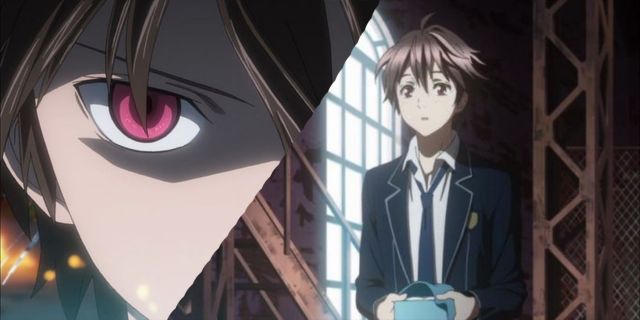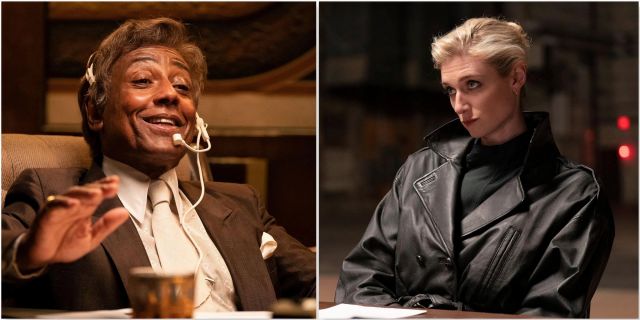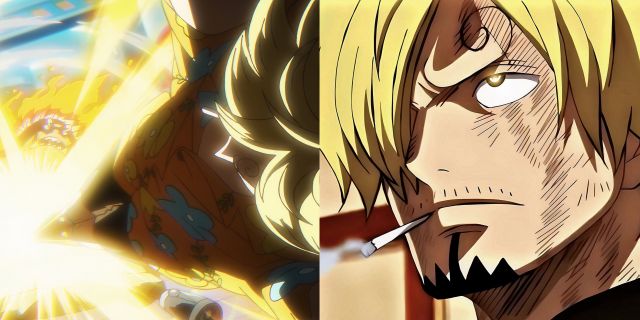Highlights
- Shu Ouma from Guilty Crown is a realistic and relatable character who starts as an average guy, making flawed decisions that imply growth.
- Shu stands out from other anime characters in that he struggles with social anxiety, has problems standing up for himself, and a relatable fear of embarrassing situations.
- Shu’s character arc in Guilty Crown shows his growth from a weak-willed and passive person to someone who gains a strong resolve to do the right thing through his experiences.
For the past decade, it’s been difficult to find realistic or even relatable characters in anime – as most tend to be a placeholder for the viewer to insert themselves into. Writing an inexperienced character is not inherently wrong, but they need to have ambitions and a backstory of their own before the viewer can truly connect with them.
Shu Ouma from Guilty Crown is far from perfect, and in fact has traits of a “generic protagonist” in that he begins as an “average guy”. Though his flawed thinking and decisions he makes in the show imply otherwise.
RELATED: The Famous Japanese Band That Started From An Anime
The King’s Power

A common issue people have with Guilty Crown, is that it’s similar to Code Geass. Written by Hiroyuki Yoshino, with the help of Ichiro Okouchi (writer of Code Geass), it would make sense to see the parallels in story telling. At the beginning of Code Geass, Lelouch stumbles upon a scuffle between a resistance group and governmental conspires. Finding him caught in the crossfire, C.C., a mysterious girl he meets, grants him a God-like power that he uses to save everyone during the first episode. Lelouch, as a character, is a natural-born leader with an incentive for justice and is charismatic to top it all off. Shu, despite going through the same sequence of events and obtaining a similar power, is not a natural-born leader. In fact, he wasn’t even supposed to obtain the King’s Power (as it’s dubbed), someone else was. In a lot of ways, Shu is a background character – by a narrative standpoint. However, he is the most realistic out of the two of them.
Main Character Syndrome

Most people like to think of themselves as the main character of their own stories, often sharing what they would do in a given situation. Everyone wants to be a hero, after all. But when push comes to shove, most won’t even take the opportunity. Shu Ouma is average at most, with a small group of friends, a mundane school life, and a loner. He’s made out to have social anxiety and problems sticking up for himself, which already sets him apart from most anime characters. We can deny it all we want, but there doesn’t exist a person in real life who hasn’t raised their hand in class, in fear of embarrassing themselves. Shu is that person.
In episode 1, after meeting Inori, she is taken away by the GHQ (a government group) and Shu’s attempt to “reason” with them boils down to meekly asking them to not be so rough with her. Later on in the episode, he’s approached by a group of thugs, and similarly tries to bow his way out. This is a 17-year-old high school student in Japan, a country with a society focused on poise and negotiation; moreover, Shu is not a violent person, and he’s never been in a situation like this. Like the majority of people would be, he’s frozen in place. In the end, when Shu unwillingly attains the King’s Power, he finds himself unprepared and involved in a conflict he never wanted to be in.
RELATED: Most Powerful Shonen Anime Protagonists
While it is arguably one of the most epic scenes in anime history, Shu’s “awakening” was brought on by his desire to prove himself and save someone, albeit at the worst possible time. It’s because of his recklessness, that the vial he was carrying that stored the King’s Power broke and ended up going to him instead, granting Shu the ability to take down the opposing side. To sum it up, he got lucky.
Living by Circumstance

The series of events that introduced Shu to the underworld of Tokyo were all circumstantial. He was in the wrong place at the wrong time, and when he took matters into his own hands, a newfound responsibility landed on him. Most people are not naturally good leaders, in fact, it’s very rare to find someone who can garner a following on their own. Shu is weak-willed and passive by nature, and so his decisions stem from his personality traits, not from logic. When offered a position at Funeral Parlor, the resistance group, Shu declines despite already being involved. When he’s held for ransom by the GHQ and saved by the former, Shu debates who he should pledge his loyalty to. Logically, it makes sense to side with Funeral Parlor since they’re the “good guys”. But the GHQ is the government, and authority figures are the “adults”. Someone who likes to stay in their comfort zone like Shu, and is taught that authority is everything, will be conflicted.
The Cowardly Lion

Shu begins to come out of his shell more as the series progresses, and we get to see growth in his character. But his flaws don’t disappear completely, either. Due to his naivety, he doesn’t know how to lead a group and lets his empathetic nature cloud his judgment, which leads to other characters taking advantage of him. But through each mistake Shu makes, he grows from it, and by the end of the anime, he still retains his kind demeanor, but he has a strong resolve to do the right thing. It’s the parts of Guilty Crown where Shu goes “screw it” and jumps in to help or takes risks, that we celebrate. But at the end of the day, it’s the experiences we have in life that shape us. And that’s exactly what Shu’s entire character arc is.











Leave a Reply